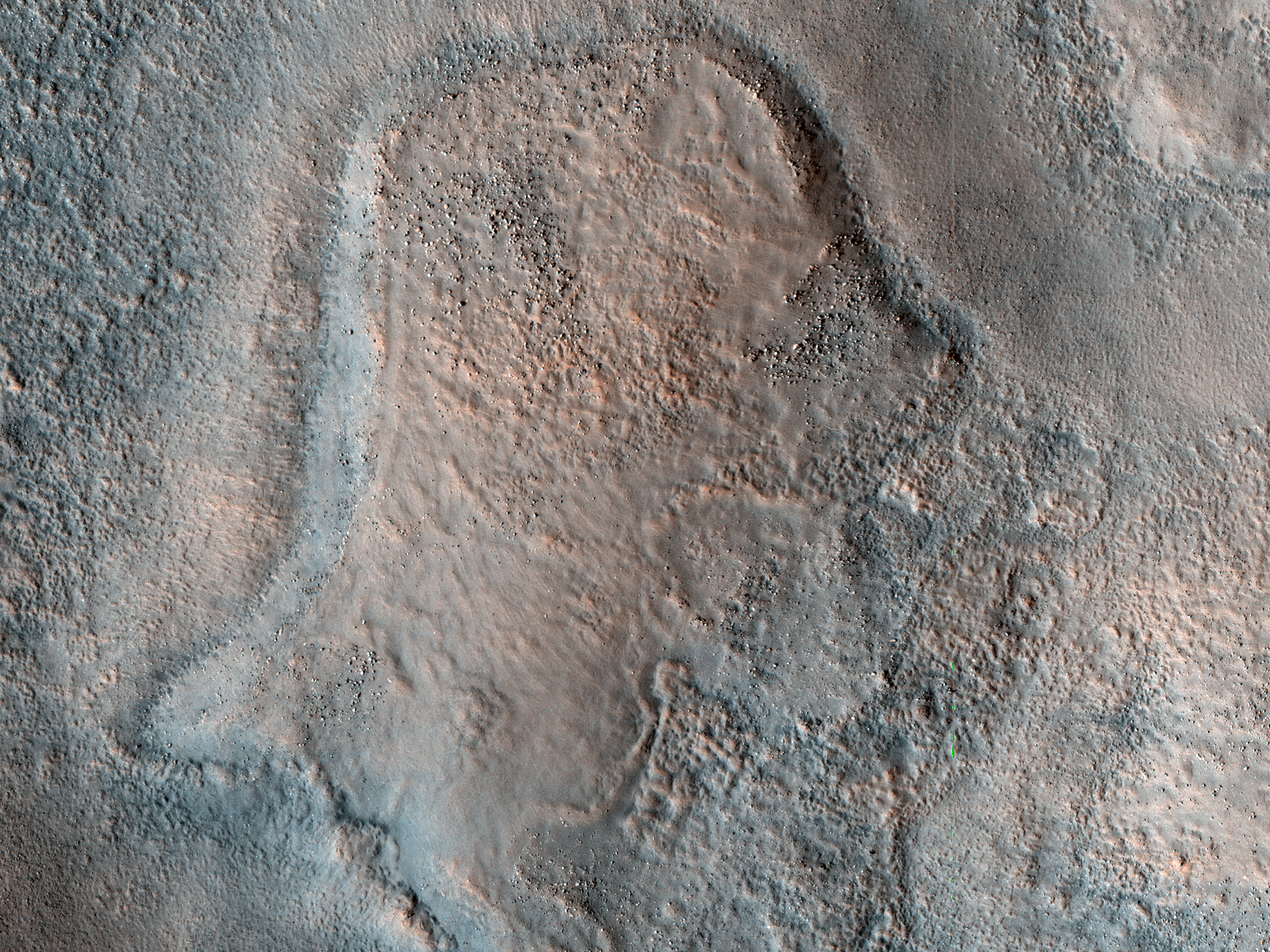
| Disrupted Sediments in Acidalia Planitia
An enhanced color view shows a pitted, blocky surface, but also more unusually, it has contorted, irregular features. |
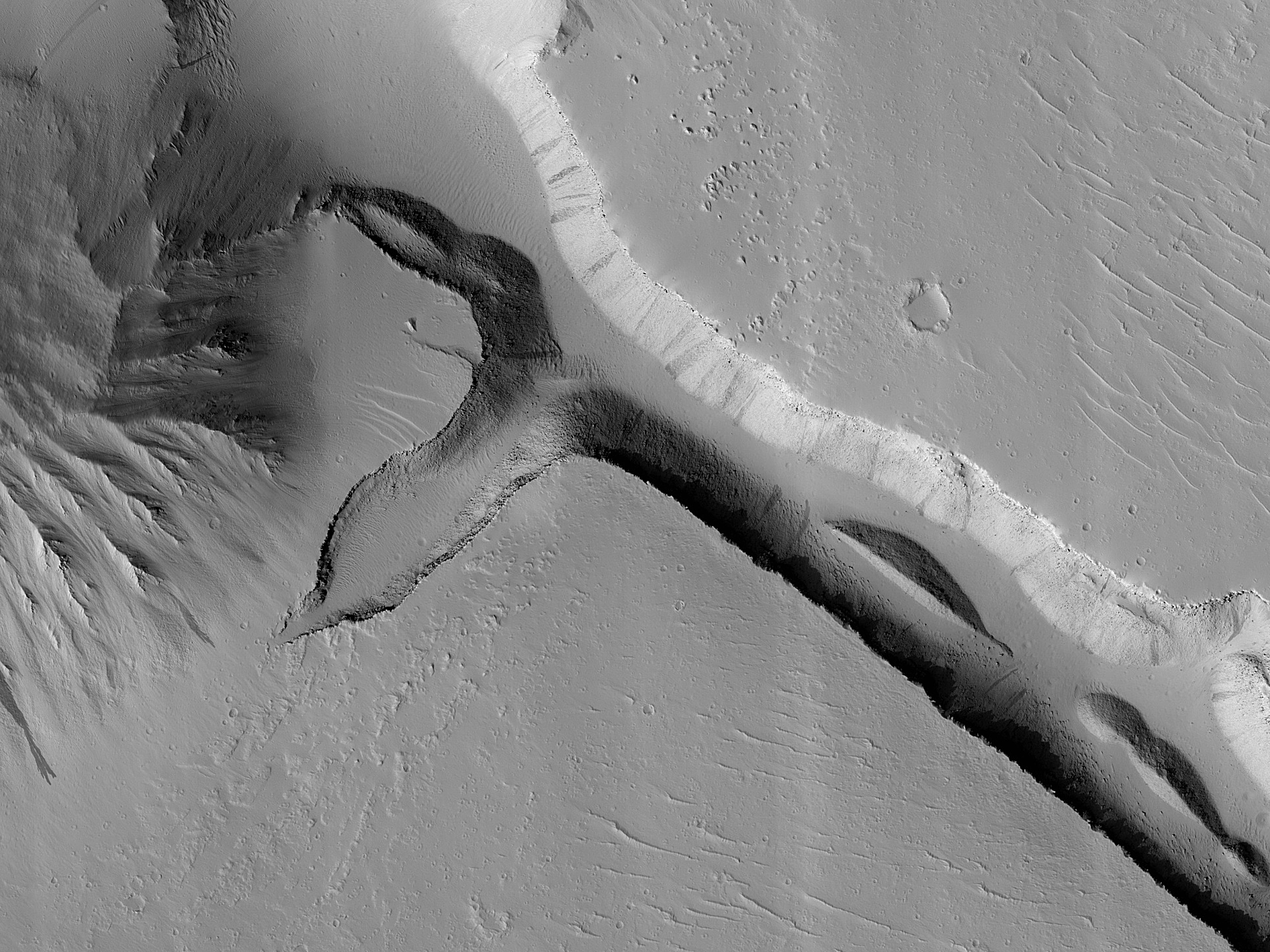
| Leaving Sulci
This image was requested to get more coverage of existing imagery at this location that shows a trough exiting Sulci Gordii. This transition may be of interest, helping to understand the nature of the trough. Sulci Gordii are a grouping of ridges —almost like small, rocky mountains—located east of the giant volcano, Olympus Mons. | 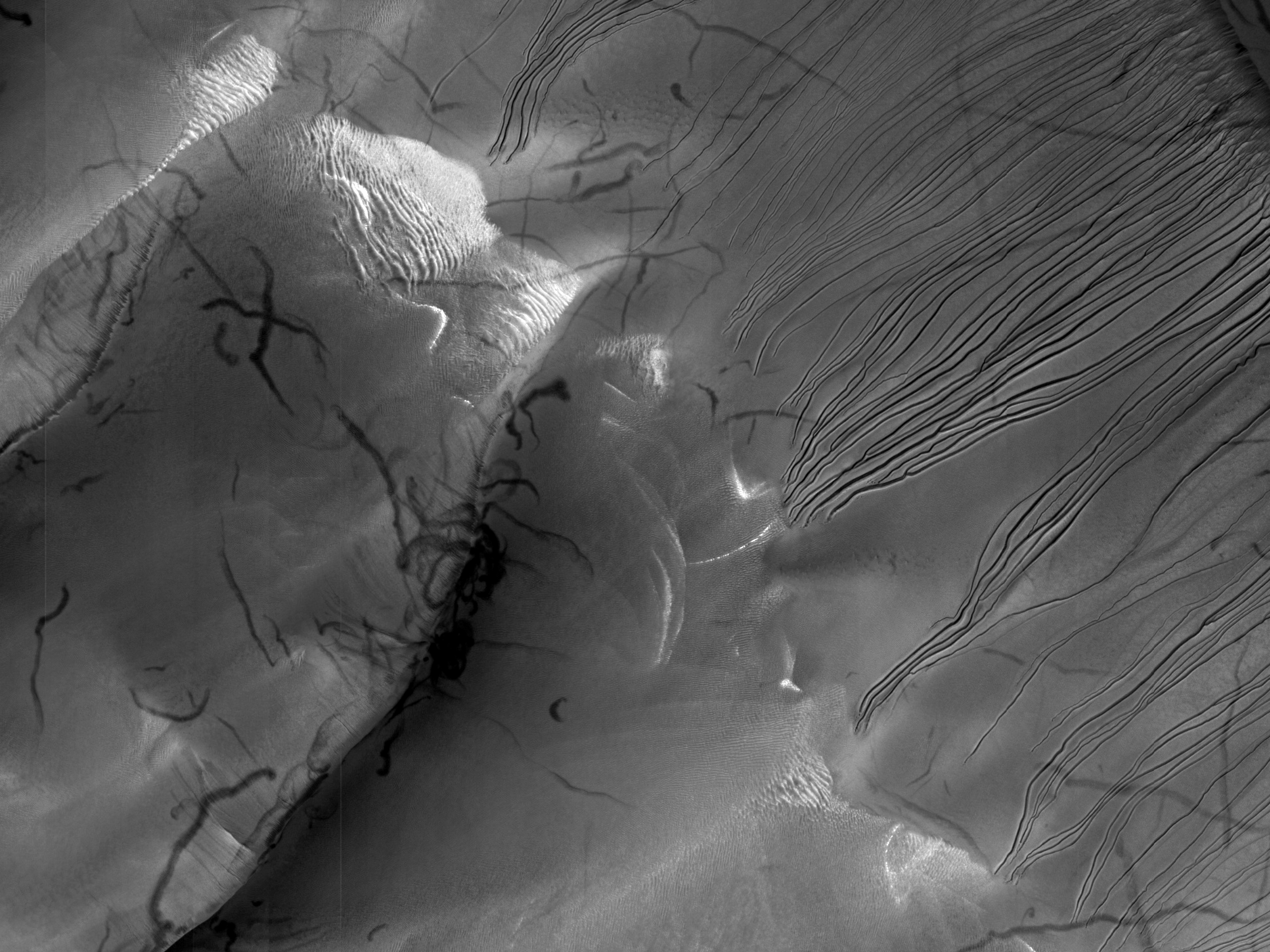
| Linear Gully Activity in Russell Crater
We acquired this image to obtain more data points needed for a comparison of activity pre- and post a planet encircling dust event that occurred in 2018. We imaged Russell Crater many times before to track changes of gully activity that we see on the extensive dunes here. Russell Crater is located in Noachis Terra, with some of the oldest terrain on Mars. | 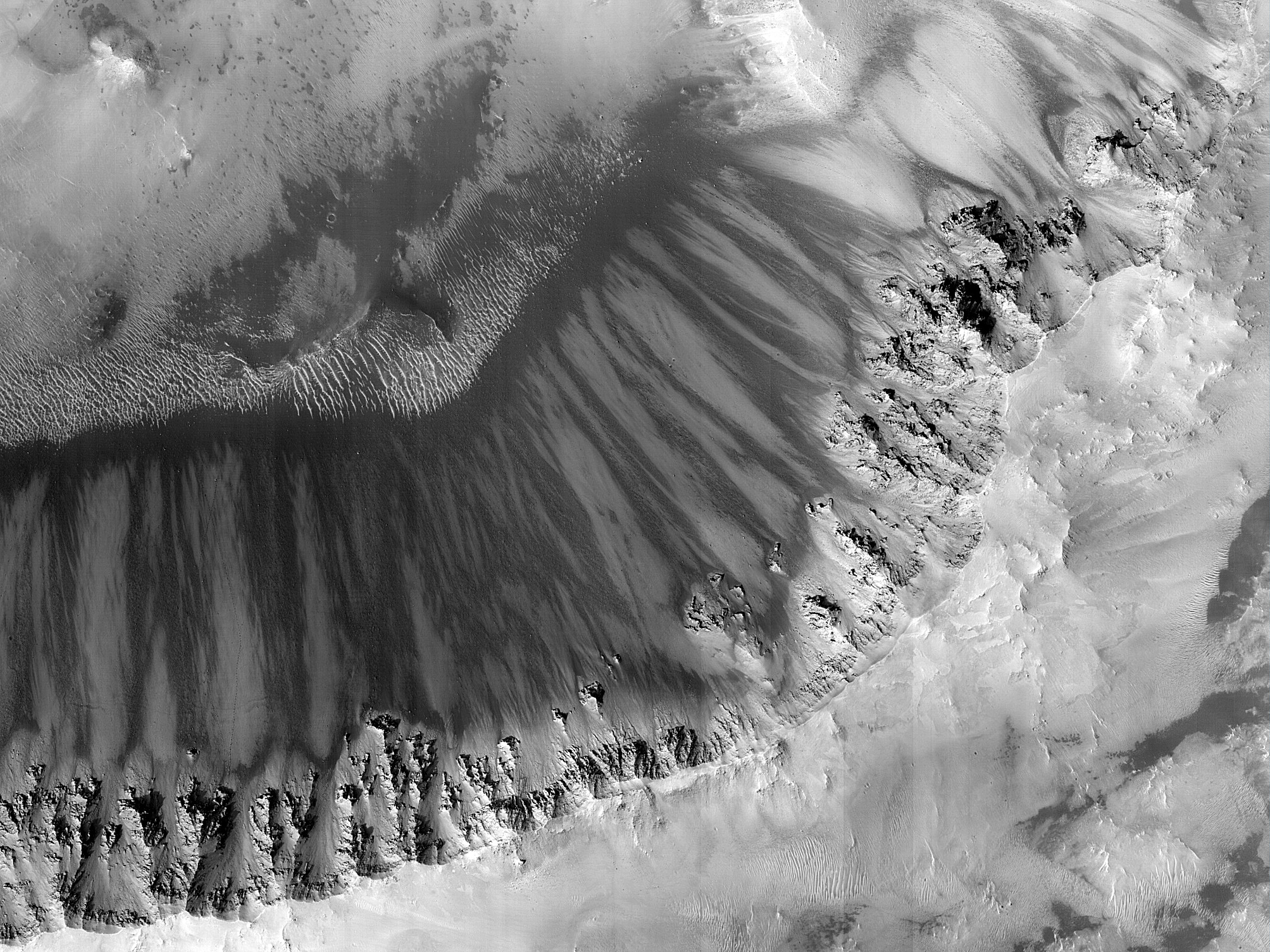
| A Crater within a Crater
This over 5-kilometer diameter impact crater within the much larger Baldet Crater is a good candidate for recurring slope lineae in a region where there are few candidates for such, especially on the North, South and West-facing slopes. We can also take a look for changes among these equatorial gullies. | 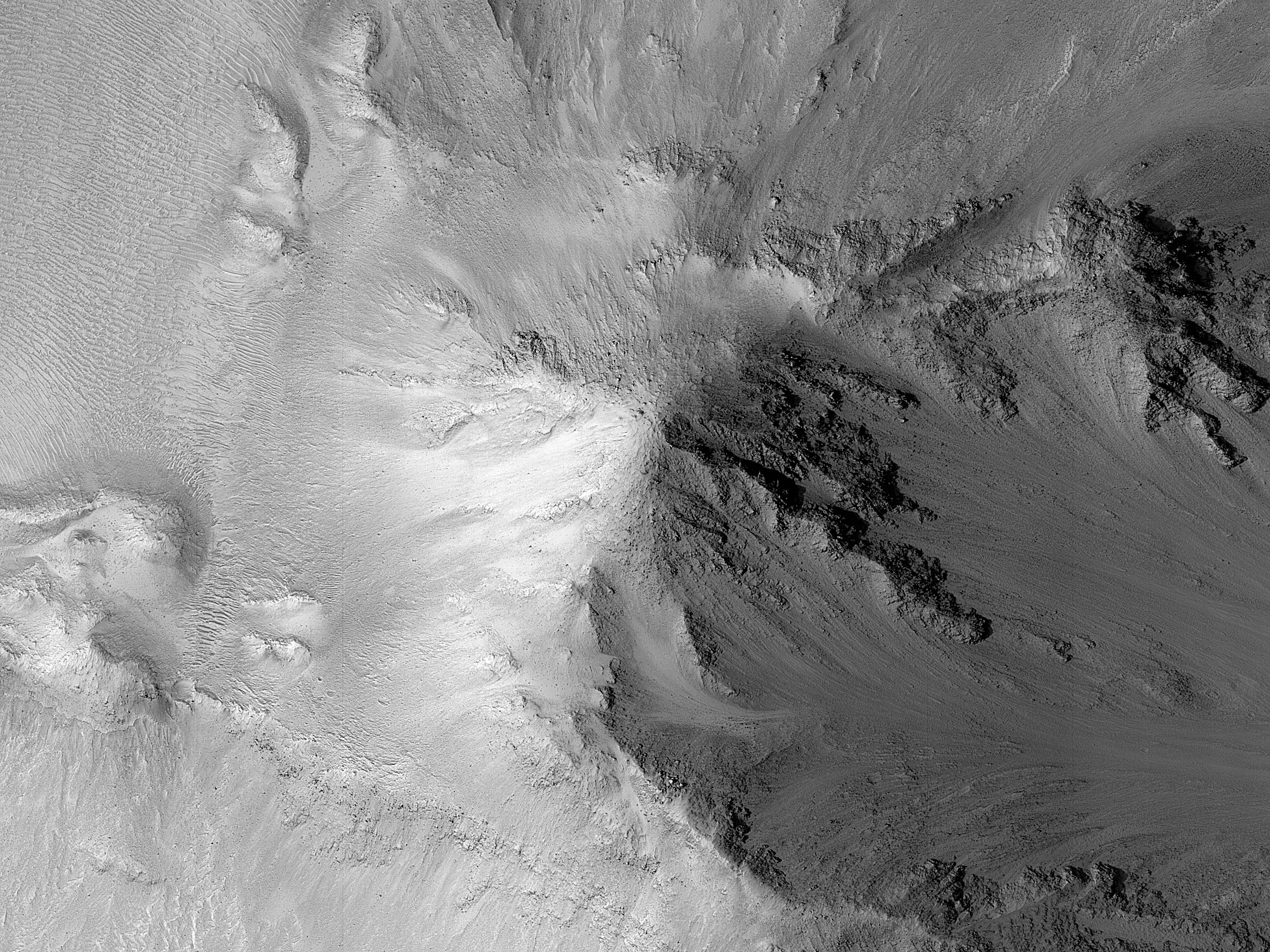
| Chasmata Boundary
The science of goal of this observation is to investigate the superposition relationship between the layered rocks and wall rock spurs along the boundary between Ophir Chasma and Candor Chasma. The law of superposition is one of the principles of geology that scientists use to determine the relative ages of rock strata, or layers. |